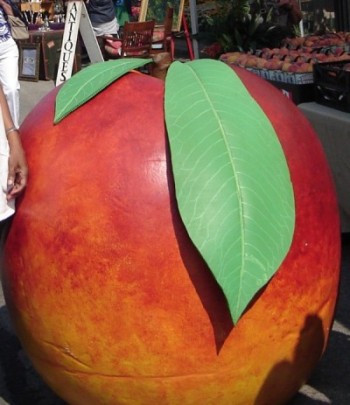On the Way to Ceylon
Every so often I have to go to Kensington because my tea’s run out, so I take the 510 from Spadina that winds through a century-old time lapse. On my way to Ceylon in the red tram, Sussex and Nassau on suspended wires thread by, and eventually when I disembark, a walking tin-man lamplights me through a Farejon familiar past.
My father’s poniard case hangs among the leather at the King. At Global Cheese while I sample, out of the corner of my eye, my grandmother in a stoop, is pulling teat, squirting goat’s milk, up-down, up-down, between taut palms. At Meat Locker I collect a couple pounds of pork hock to silken my chickpea soup. But at some point I remember that my destination is really the House of Spice.
Even so, on entering this doorway, although I’ve come for one thing, my eyes begin another list: anise, bay-leaf, leaf-green masala, cardamom, saffron, nutmeg in phantom mace mask, cloves, some to cook with, some to hang from my ceiling in a paisley potpourri cloth pouch.
This bondage brings water to my tongue, savory and piquant, indifferent to who I’ve been, want to be, or who I am.
©Cynthia James – April 2015
And the last shall be first
And the last shall be first
She put her loonie in the slot and chose the middle candle in the front row. So many parables about the last being first, but picking last had not worked so far. In the darkness of the chapel, the oval silhouette of her face glowed just a moment as the tinder in the candle lighter flashed. She knelt down and looked up at Mary. Such understanding and peace flowed from those tender eyes:
« Je vous salue Marie … »
No. She would bare her heart in the new tongue. She was bi-langue. She would adapt as the Mother of all refuge, the Mother who had fled her own home with her son in her belly when Herod attacked. Theirs was a common language. Sainte Marie would understand.
“Mother, I’m sorry if I have asked too much …”
Her voice, rising to a quiver in the sombre chapel frightened her, so she stopped. Mary knew her every thought, her words, her deeds, her heart. Eight months in the shelter. Room and board she had, and she was grateful. She had shared with strangers. There was food, there was kindness, there was voluntary work in the kitchen and community. But still no papers. Was asking for papers too much? All this her heart threw up, eyes pressed tight.
“Mother, if dignity is sin, then I stand accused. But hear my plea, O Sainte Marie, I’m losing my mind.”
She rocked back and forth on the kneeler in the dark silence.
And then the front portal squeaked. A triangle of light invaded the chapel from outside and swiftly collapsed as the door swung back with a crash.
©Cynthia James March 2015
Dionne Brand: Love Enough
Love Enough, Dionne Brand’s 2014 urban allegory asks: Do you love enough? Are you loved enough? Do you have enough love? It’s tempting to look at the novel’s overlapping reflections on love, violence and the desire for freedom, depicted through its three pairs of characters as particularly modern; however, these reflections are embedded, not only in the characters’ histories, but the histories of the prior generations to which these characters are connected.
For, though delineated against the brittle Toronto skyline, the Dupont and Dundas enclaves depicted are just catchment estuaries for deposits of fraught lives. It is to ignore Da’uud’s history, for instance, to lay wholly at the feet of Toronto the fact that Bedri falls off the tracks; and Bedri, Lia and June, the most sensitive partners of the three couples in the novel don’t seem to be able to get out of the stasis that has followed and swamped their desire to live fully and to act. Further, in retrospect June realises that she has been more a victim than an agent of her age-old compassionate eye and that the youthful hope of Xavier Simone’s “Love Poem 17” has limits to its power to save or to transform any life.
Of course, the novel does not bypass local insouciance: the city is sending a hundred musicians to Jane-Finch; and as for change, change is depicted as the ugly-beautiful (scars of train-station memory left behind from failed loves and passions).
But the strongest whisper beneath the novel seems to be the awareness of the cyclical and ritualistic nature of human hurt and unfulfilled desire. June, for instance, in spite of her yearning for love beyond sexual ecstasy, has always loved tentatively, watchfully, and with an acute sense of the power of love to destroy.
Do you love enough? Are you loved enough? Do you have enough love? The triptych offers no follow up on its three paired lives. Bruised living, like Bedri’s imaginary bird and Lia’s metal butterfly, remains behind closed doors – in an Audi, in a condominium, or hiding out on Ward’s Island, each in its own plateau of silence. But every so often a wounded sunset slices the cornea of the sky, arresting and impaling with perpetual compassion June’s bloodshot eye.
©Cynthia James January 2015
All For A Byte
You can throw those out, she said, But you see this? Not this,
crick-crack back, stretching for a snack while cleaning out her basement.
This inkjet Epson FX 80 was word perfect, pointing to the dot matrix,
and the eyelet-holed accordion paper beside it.
These never-ending perforated tear-out edges still light enough for kite tail,
even though the carriage stick, and can’t do its staccato
caterpillar shift across the drawbridge. This too. Angie gave me this,
she said, shining a golden on the pants leg of her denim.
This 9” IIc cursor blinking green, see how they turn
the floppy 5. 25 drive into a happy-face emoticon?
Saving was a problem. Long-long you waiting while it whirring,
she said, taking a byte of the apple. And still,
you might have to write your whole scream out longhand,
so that you wouldn’t lose your entire day or mourning writing.
©Cynthia James December 2014
What The Tin Man Said
I unscrewed the jar of cocoa butter on the tv stand (I had a jar in the kitchen, one next to my bed, and one on the computer table), warmed a daub between my palms and began a slow dragging spread. Up each arm, up each leg, another glob for my thighs and belly, and then fully anointed, bent over, crossed my arms, hugged my shoulders, felt the knife slice of the skin crack at the back of my waist, opened the cocoa butter again, and to soothe the burn, feathered three slight touches of wax coating.
Outside there was nothing to hear except tyres flicking cowlicks of snow, the rills of scraping banked aslant in the ploughs’ wake. My eyes sparked and watered at the only flashes in the dourness, the red, green and amber of the traffic lights at the intersection. I waited patiently for the pin-pricked tin man to open his scissors legs, signalling WALK above his head. All hooded and bowed, nobody spoke. Nobody could speak. In fact, it was only when you got indoors you would recognize anyone again.
© Cynthia James October 2014
The Snowpiercer
I was looking for a movie to officially end my summer, when flipping through the billings, my eye caught one entitled The Snowpiercer.
With last winter’s ice storm still blindsiding me in my moments of quiet with a dreaded fast-freeze, I thought it best to face the anxiety of Winter 2014 head on … be my own shrink, so to speak.
Thus The Snowpiercer.
Right from the start, let me say as concept The Snowpiercer is a fairly good environmental teaser, but the movie failed to satisfy my appetite in graphics, coherent screen play and characterization.
Movie time is 2035 and the actual snowpiercer, a train forty-four carriages long must keep circling the earth till hell freezes over in a forever do or die, if the humans on board want to survive.
Hell has already frozen over, of course, in so far as the people aboard are survivors of the environmental destruction we engage in on this planet every day. Their pollution has returned the world to an ice age – a veritable a picture-perfect snow globe if it weren’t so desolate.
And the train, like a wind-up Christmas toy, which keeps forever running at the base of the snowed-over skyscrapers, opens up a window on the frozen but mind-blowing architectural structures of our civilization now turned hot ice.
Listen carefully …. and one can hear, Stille Nacht! Heil’ge Nacht a-tinkling.
None of this lost art gallery the inmates of the tail of the train, who live in dungeon like squalor, have seen in ages. So imagine how even more spell-bound at seeing it are the generations who knew it not and who have been chosen to become its salvation, the progeny of these very dungeon inmates, children born on the train!
For in its organization and layout, the train itself mirrors a hierarchical structure even more stringent than that of the past frozen world. The elite at the head of the train have devised a system of brutal policing, food rationing and servitude (that includes child labour to keep the engines turning under the flooring), to secure their comfort and to ensure that the train keeps moving, since if the train stops, everyone will be stranded among the tombstones of the now frozen earth that they circle from year to year. The leisured privileged and their indulgent children at the head of the train live off the energy of the tail, keeping its denizens in their place through an army of intermediaries, messengers and hatchet men (literally).
It’s easy to guess what props this drama up for its almost two hour length – the tail’s revolt, or course! the only successful one in recent history when a leader, unleashing an unending bloodbath, manages to forge his way up in a human rights mission to unseat the engine driver, the ruler, and right the wrongs of the train.
So who is this gutsy leader, how has the tail picked him, and what has singled him out for the role?
For me, apart from awe at, and my enduring faith in, the unshaken upright snow globe passed by outside the train window, the wherefore and the why of this leader’s choosing is the only other angle that redeems the forty-four carriage long revolt, replete with drugs, orgies and gore.
Has The Snowpiercer done the trick of psychologically preparing me for Winter 2014?
Perhaps it has.
Give over, Fall, I say. As Shelley prophesises:
If Winter comes, can Spring be far behind?
For the avalanche of snow that buried Calgary over these past late-summer days of September 2014 hasn’t disturbed me one bit.
© Cynthia James – September 2014
Toronto Night Market
I’ve been in Toronto for ages, it would seem, and still know so little about this city, hence as an old-stager, my ‘First Summer’ recommendation for anyone, after doing one this year, albeit for the first time:
Do a Toronto Night Market. What walkabout food-and-entertainment cultural fun!
To get to the one I went to, you take the 72 at Pape. And when the swarms of people come off at Commissioners and Cherry, just follow them straight into the stinky tofu den. BTW you will be the only one asking what’s that smell? Everyone’s nose has gone on a pc-vacation. No one else knows what you’re talking about, so you’d better put away that Kleenex. Yes, there are food inspectors around.
Follow the throng to the most patronized stalls and there you are, in front of a deep fryer turning out cubes by the thousands for demanding patrons, who are just dousing their mounds with a little of this and that per preference. Close up there is no smell. This delicacy is an acquired taste, I’ve learnt. Get over it! It’s the wafts of perspiration mixed with the heat saturation that is making your breath so labored.
OK, Have some barbecued trotters instead. Good to know that there is a cultural alternative to what you call souse – your pressure cooker-ed pig foot swimming in cucumber, lime juice and watercress. Or you can have curried fish balls and a noodle cocoon of delicious skewered shrimp. I also want that! you say. Squid threaded and splayed like origami pagodas that the young people are walking around with, biting into twirls staggered from the curling edges of crimped towers – crispy storeyed goodness tapering down to the bottom eaves.
And it is then in a flash you might have a mind-association anthropological experience. You can’t help but wonder about the affinity between cultural history and architectural perception, between raw material and the design of an end product. Not in a simplistic essentialist way, but still you can’t help but wonder why souse and why barbecued trotters?
Not adventurous enough for stinky tofu? However, you might try going down memory lane on oysters. These are shucked in your presence and placed on ice in a styrofoam container with packets of condiment. Your taste buds know mangrove oysters, in a shot glass slurped at a stand with a flambeau on top on Southern Main Road over a running canal. While digging and pasting and slurping from this farmed oyster box lunch, your Trini friend swears that these micro-managed packets of hot sauce and lime DON’T COME CLOSE, cannot be classed with your cocktail of tomatoes, garlic, scotch bonnet, lime and of course, bhandhania, the key ingredient. I mean, this is OK, but that cocktail, your friend reminisces, that cocktail! You could drink a whole bottle all by itself.
As for entertainment, live bands (no Machel, he is at Caribana), a noodle eating competition in which the locals are outclassed by visitors from out of province and out of town. Get some beauty tips for keeping your makeup fresh – here no gender bias. Get ambushed into a free wellness diagnosis for that ancient pain in your lower back. But, of course, nothing is really free – everyone wants your email or your number so that they can attack your pocket-book where it hurts when this promotional day of public spirit is over.
Take a quiz at the eco-energy booth and win $5 coupons for low wattage light bulbs. You are already smiling, so why not succumb to the request for a picture with the team? For youtube, they say. Normally you wouldn’t. In your right mind, you wouldn’t, but at the Night Market, what’s the harm? With the jollity you don’t feel like saying no to anything. This is also why you need to go with a responsible friend, and needless to say, reciprocity counts.
Your legs will get tired after a while, so sit at table with people you don’t know, people with whom you don’t share a common tongue, but you’ll find that a few Pimsleur phrase words and some pointing and waving, do the trick – where to find the closest 3D printing hub and albeit by a different name, how to eat conch. Trade information, exchange a few recipes and walk away with a large as life appreciation of different jacket, same species found around the world.
And that was the core of my Night Market experience, for market is market in the vision of a shared world. Travel with the eye of a perpetual newcomer, regardless of how many years you can claim on the ground. Humble yourself to experience, for if you allow yourself to become complacent about years under your belt, place and difference, it is difficult to share, to be renewed, and to be open to learn.
© Cynthia James – July 2014




